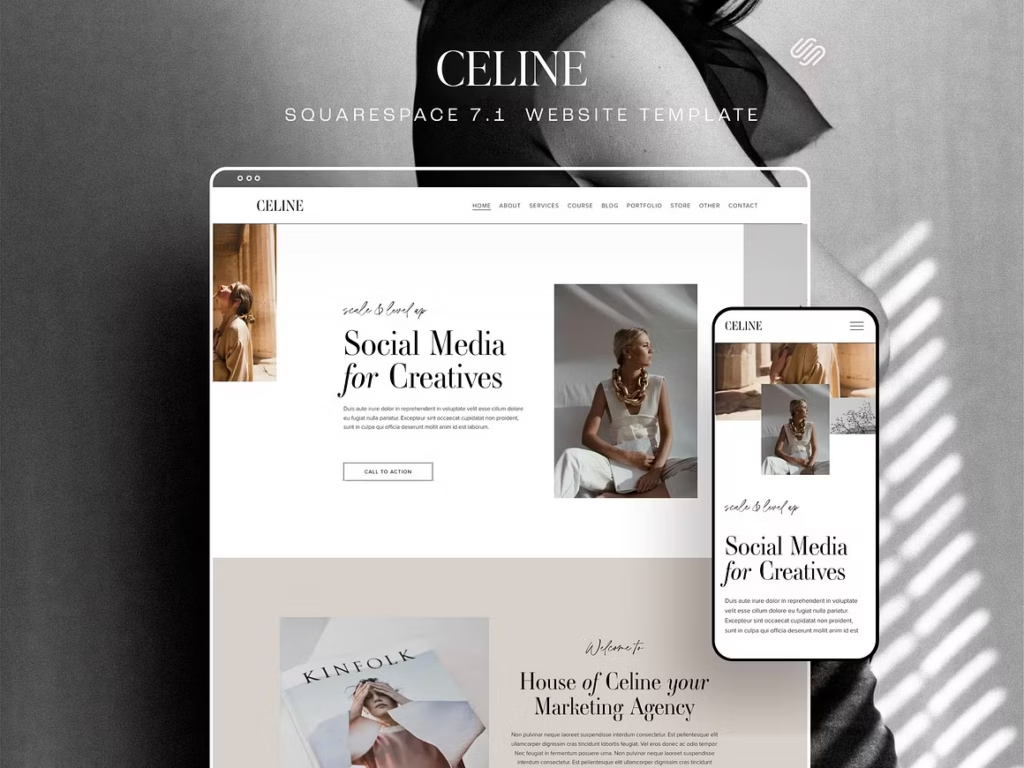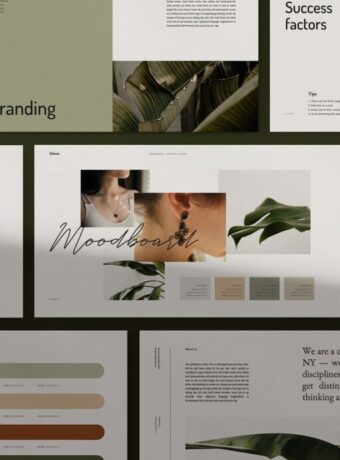5 Key Elements of Personal Branding for Designers
Most designers think their work will speak for itself, never thinking about the value of personal branding.

But in a crowded market, talent alone is not enough. Clients need to see you before they can choose you. And what they see has to feel clear, confident, and consistent. That’s what personal branding does.
I’ve worked with designers for years – some just starting, some leading studios, some burned out from client work they never wanted. They all had one thing in common: they got better clients when their personal brand reflected their actual personality and values.
If you’re a designer trying to attract better-fit clients or sell your own offers, your personal brand is not a luxury.
It’s your edge.
What Personal Branding Really Means for Designers
Your personal brand is the feeling people get when they land on your page, scroll your portfolio, or hear your name.
It includes your voice, your visuals, and the kind of energy you bring to the table. It’s not about sounding like everyone else. It’s about showing who you are in a way that your ideal clients recognize and trust. Your design work may be excellent, but if your brand looks scattered or sounds unclear, people won’t reach out.
They’ll assume you’re not ready, or worse, they won’t remember you at all.
My Own Branding Shift
Years ago, I tried to be too neutral. I used soft colors and vague words because I wanted to stay open to everyone.
It backfired. The clients who found me didn’t value creative direction or branding strategy. They wanted logos fast and cheap. When I rebuilt my personal brand around clarity, style, and mood, everything changed. I used my background in visual psychology and seasonal branding to show what made my work different. Suddenly, I started attracting people who cared about aesthetics, messaging, and emotional impact. My rates went up. My projects became smoother.
And my confidence grew.
5 Key Elements of Strong Personal Branding for Designers
Here’s what matters most if you want to stand out:
1. Define your core style
Don’t try to look like every trend.
Choose a visual style that feels like you. Are you minimal and modern? Bold and playful? Soft and detailed? Build your portfolio and site around a look that fits your personality and your best work.
2. Use words that match your work
Your design may be beautiful, but your words must match the tone.
If your work is clean and structured, keep your copy clear and confident. If your work is expressive and artistic, let your voice reflect that. Your about page, headlines, and case studies all matter.
Most clients don’t hire you just for visuals.
They hire you because they trust your mind. Share your thinking in your captions, stories, or blog posts. Walk people through your choices. Let them see the depth behind your work.
4. Show your face
People trust people.
A strong headshot or a few candid photos can do more for your personal brand than a dozen extra projects.
Let clients see who they’re talking to. If you’re camera-shy, start small with one natural photo and build from there.
5. Curate your work
You don’t need to show everything.
Only include projects that reflect where you want to go. If you want to do more packaging, show packaging. If you want to work with high-end brands, don’t post your free projects. Your portfolio is a filter.
What Clients Look For in a Personal Brand
I’ve sat on both sides: as the designer and as the client hiring other designers for projects.
When I look at a designer’s site or Instagram, I ask:
- Do I feel like I know them?
- Do they seem reliable and clear?
- Does their style match what I want?
- Do they care about the details?
If your brand answers those questions fast, you win the client’s attention.
If not, they move on.
How to Build Trust Without Sounding Salesy
You don’t need to shout.
You need to be consistent. When your visuals, tone, and messaging match, people feel calm. They stop questioning and start listening.
That’s how you attract clients with your personal branding without chasing them. Your brand does the filtering for you. You also don’t need to tell your life story.
Just share the right parts: what you care about, how you approach projects, and what makes your work different.

Mistakes to Avoid
- Using generic words like “creative solutions” or “passionate about design”
- Trying to please every client type
- Showing too many unrelated projects
- Copying someone else’s tone or visuals
- Hiding your pricing if you work with fixed rates
When your brand feels unclear, it creates doubt. Doubt loses clients. A clear brand gives you control over who shows up and what they expect.
Final Thoughts about Personal Branding
Your personal brand is a tool.
When it’s sharp, it cuts through the noise. When it’s soft or vague, it blends in.
If you’re a designer who wants to attract better clients, charge higher rates, or launch your own products, your personal brand is the first thing to fix. You don’t need a rebrand. You need alignment.
Start with one piece. Maybe update your bio. Add one strong photo. Rewrite your service page. You’ll feel the shift almost immediately.
And once you do, you won’t want to go back.
Learn More About Branding
What is Brand Anatomy – Its 8 Major Elements
How To Design Your Brand: Brand Photography
What is Visual Branding and How It Can Help Your Business
Last Updated on 01/06/2025 by Victoria Silber





